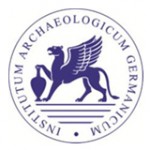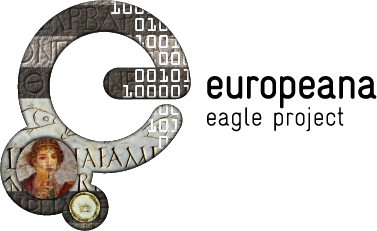 On April 21, 1829, a group of scholars, artists and diplomats founded the «Instituto di Corrispondenza Archeologica» in order to research and publish monuments of ancient art, epigraphy and topography. In 1871, it became a Prussian State Institute and in 1874 an Imperial Institute. In the same year the Athens Section was founded and in the following century, sections were founded or affiliated in Cairo, Istanbul, Madrid, Baghdad and Tehran, while two commissions were founded in Germany (Frankfurt and Munich). In 1979, the Commission for General and Comparative Archaeology, which is responsible for archaeological research outside of Europe and the Old World, was established in Bonn (today KAAK). Finally, stations in Sanaa and Damascus, and branch offices in Lisbon, Ankara and Ingolstadt were set up. In 1995, the Eurasian Section for archaeological research in the Non-Allied Countries and neighbouring areas was founded, incorporating within it the Tehran Section. The Near East Section was created in 1996 by joining together the Baghdad Section with the stations at Damascus and Sanaa. A new section in Bejing was opened in 2010. Today, the German Archaeological Institute is a federal agency under the Ministry of Foreign Affairs that employs around 450 scientists. The institute is headed by a president, whose deputy is his secretary general and the responsible party in matters of scientific organization and policy. The individual branches (departments and committees) are headed by directors. The staff of the Deutsches Archäologisches Institut carries out research in the area of archaeology and related fields, including domestic and (especially) international excavations, expeditions and other projects. Research results are presented in numerous publications (to date more than 60 volumes per year). The Institute maintains libraries and photo archives that are at the disposal of international scholars. It maintains relations with international scholars, including numerous important specialists from associated fields who are regular and corresponding members. It also promotes the next generation of scholars. Furthermore, the Institute organizes congresses, colloquia and tours, and informs the public about its work through the media.
On April 21, 1829, a group of scholars, artists and diplomats founded the «Instituto di Corrispondenza Archeologica» in order to research and publish monuments of ancient art, epigraphy and topography. In 1871, it became a Prussian State Institute and in 1874 an Imperial Institute. In the same year the Athens Section was founded and in the following century, sections were founded or affiliated in Cairo, Istanbul, Madrid, Baghdad and Tehran, while two commissions were founded in Germany (Frankfurt and Munich). In 1979, the Commission for General and Comparative Archaeology, which is responsible for archaeological research outside of Europe and the Old World, was established in Bonn (today KAAK). Finally, stations in Sanaa and Damascus, and branch offices in Lisbon, Ankara and Ingolstadt were set up. In 1995, the Eurasian Section for archaeological research in the Non-Allied Countries and neighbouring areas was founded, incorporating within it the Tehran Section. The Near East Section was created in 1996 by joining together the Baghdad Section with the stations at Damascus and Sanaa. A new section in Bejing was opened in 2010. Today, the German Archaeological Institute is a federal agency under the Ministry of Foreign Affairs that employs around 450 scientists. The institute is headed by a president, whose deputy is his secretary general and the responsible party in matters of scientific organization and policy. The individual branches (departments and committees) are headed by directors. The staff of the Deutsches Archäologisches Institut carries out research in the area of archaeology and related fields, including domestic and (especially) international excavations, expeditions and other projects. Research results are presented in numerous publications (to date more than 60 volumes per year). The Institute maintains libraries and photo archives that are at the disposal of international scholars. It maintains relations with international scholars, including numerous important specialists from associated fields who are regular and corresponding members. It also promotes the next generation of scholars. Furthermore, the Institute organizes congresses, colloquia and tours, and informs the public about its work through the media.
In 2004, the DAI and the Cologne Digital Archaeology Laboratory (CoDArchLAB) joined in efforts to support the central object-database Arachne as a free internet-based research tool that provides the contents of all DAI photo archives (iDAI.images) and the rare books of the DAI’s libraries (iDAI.Bookbrowser). Unlike other databases, Arachne aims to contextualize every object. The database already displays more than 1,000,000 scans. Together with the AAR and the EFR, the DAI is working on a digitized version of the Corpus Inscriptionum Latinarum (CIL), a comprehensive collection of ancient Latin inscriptions from the Roman Empire that will initially be comprised of the more than 50 volumes published before 1940 with an OCR searching capability. The goal is to create a keyword-searchable database that can be combined with Zenon (Online catalogue of the DAI’s libraries) and contextualized with the objects and topography records in Arachne.
Role in the project
- Content provider
- Responsible for WP5 (End-user dedicated services) and for the storytelling application (T5.4)
